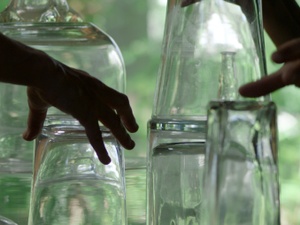FESTE FEIERN!
In the organizer's words:
Festivals are one of the most important cultural-anthropological phenomena in human history. They are of essential importance for human coexistence. The exhibition "FESTE FEIERN!" sheds light on this phenomenon. The focus is on festivals and celebrations of Greek and Roman antiquity from the 6th century BC to the 3rd century AD. Festivals basically consist of four sections: the procession, the ritual, the competition and the communal eating and drinking. In the exhibition, they are represented by pictorial stories on amphorae and bowls, sculptures, objects and reliefs. The selected objects from the MK&G's Collection of Classical Antiquities are complemented by loans from the National Archaeological Museum in Naples and the Capitoline Museums in Rome, among others.
The exhibition not only presents the various elements and diverse creative aspects of festivals in antiquity, but - according to the central message - ancient festivals are the origin of our present-day festive culture. A film essay produced especially for the exhibition with excerpts from international celebrations and festivals such as the Munich Oktoberfest and the Heavy Metal Festival in Wacken provides a contemporary approach. A funeral service in Hamburg and an Aramaic wedding in Rheda Wiedenbrück, Gütersloh and Herford offer insights into private occasions. Key players and experts have their say, including the Cologne float builder family Paffenholz, Wacken founder Thomas Jensen and Munich's Lord Mayor Dieter Reiter. The film illustrates the parallels between ancient and modern festivals. In addition, students from the Hamburg University of Applied Sciences (HAW) will be presenting their own work in conjunction with the ancient exhibits.
The exhibition is kindly supported by the Kulturstiftung der Länder, the Karin Stilke Foundation and the Hans Brökel Foundation for Science and Culture.
This content has been machine translated.










